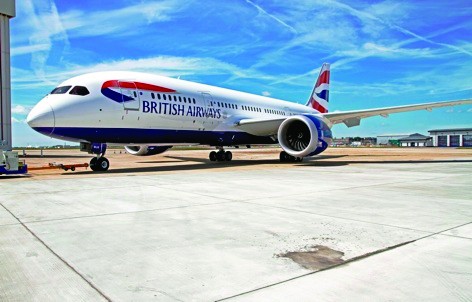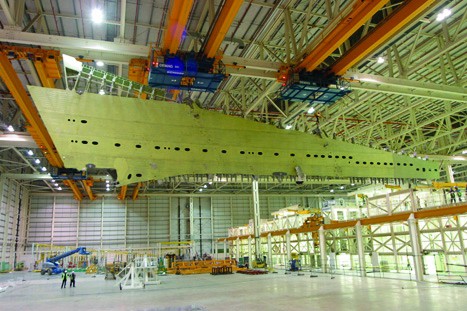Paul Everitt, chief executive of trade body ADS, believes these measures will build on work that has so far helped the industry gain a 17 per cent foothold in the global commercial aerospace market which grew by 28 per cent in 2013.
ADS estimates demand for 60,000 new aircraft worth over $5 trillion in the next 20 years and Everitt believes joint government-industry initiatives such as the Aerospace Growth Partnership (AGP) are providing the right incentives for investors.
Everitt told The Engineer that Tom Enders, CEO of Airbus Group, and Fabrice Brégier, president and CEO of Airbus, have independently confirmed that action being taken in the UK is positively influencing investment decisions here.
‘We imagine…that in the coming months, and the rest of this year, we will see further indications that major global players are looking anew at the UK and their investment opportunities here,’ he said.
Jeegar Kakkad, director of policy and chief economist at ADS agreed that government sees the long-term benefits to the economy of aerospace in terms of innovation, exports and higher-paid jobs, but Everitt believes further measures are needed to make the UK more attractive, with the Treasury having a pivotal role in this.
The UK’s R&D tax credit regime currently provides a 10 per cent credit against allowable expenditure, a figure Everitt wants to see steadily increased.
He said: ‘In Europe there are good examples of R&D tax credit regimes of 13-15 per cent, and globally around 18-20 per cent…a commitment over time to ensure that the R&D tax credit regime is made globally competitive, in the same way that he [the chancellor] has made a commitment around corporation tax…would be incredibly significant.’

Furthermore, March 2013 saw the publication of ‘Lifting Off - Implementing the Strategic Vision for UK Aerospace’ in which AGP acknowledged the difficulties encountered by SMEs at the start of a period of potential growth.
‘Very often growing demand is quite challenging.’ said Everitt. ‘You need much more cash – your cash flow gets impacted because you need to buy more raw materials, buy more labour. Payment terms are not necessarily going to be wholly matching up, so there’s a cash flow implication. There is also a need…[for] new plant machinery and suchlike.’
To overcome these hurdles, Everitt believes the current annual investment allowance - which raised the maximum annual investment allowance from £25,000 to £250,000 until 2015 - should be extended too.
He said this would give SMEs the appropriate encouragement to invest in new plant and machinery and improve cash flow as certain corporation tax liabilities can be offset through the capital allowance regime.
Further tax incentives could be provided for companies wanting to build new facilities, given that the UK is the only OECD and G20 nation that doesn’t have a specific tax allowance for new building facilities.
‘We think that’s one area that would demonstrate that we in the UK were doing everything we could to encourage existing investors to invest in new buildings but also potentially new entrants to the market,’ he said.
Pending these reforms, Everitt said the first priority is for the UK to sustain its market share in a growing global market where Kakkad sees further opportunities supplying nations looking to grow their domestic capabilities.
‘Clearly over time we would like to think that we could grow our market share,’ said Everitt. ‘But we shouldn’t be fooling ourselves that that’s going to be an easy ask.’

Established and emerging markets will provide opportunities and challenges for the Britain and an initiative launched by ADS aims to highlight activity in the global market, and the UK’s success within it.
According to Everitt, the recently launched Commercial Aircraft and Engine Orders and Deliveries report is designed to remind industry of the opportunities for the UK within the sector.
Maintaining a steady supply of aerospace engineers is another motive for producing the report.
‘That is one of the reasons why we are quite keen to send these signals about the growth in civil aerospace: to reassure students - and often their parents - that a career in aerospace and aerospace manufacturing is going to be a long-term and rewarding one.’





April 1886: the Brunkebergs tunnel
First ever example of a ground source heat pump?